Coffee Pot, Calvert County
From the USS Maryland Silver Service
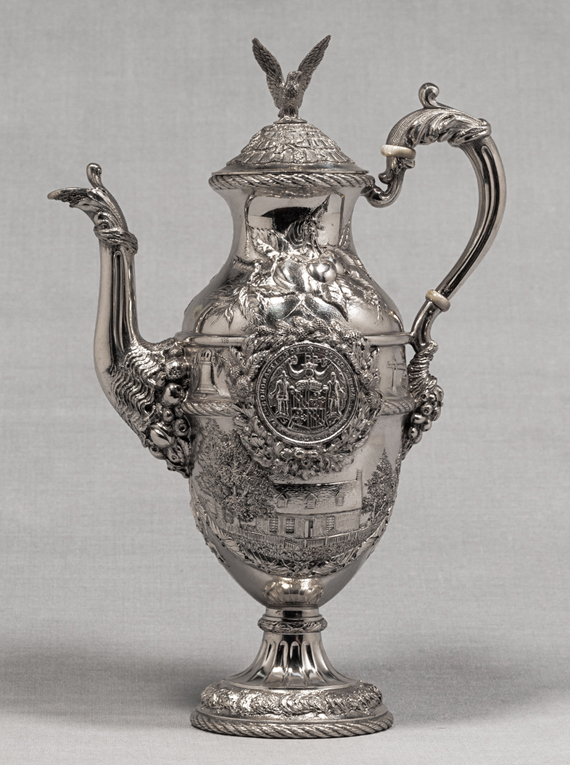
Maker: Samuel Kirk & Sons (1815-1979)
Object: Coffee Pot, Calvert County
Date: 1906
Medium: Sterling Silver
Dimensions: Overall height, 12 1/4”, Overall width, 8 1/4”, Overall depth, 6”
Accession number(s): MSA SC 1545-0932
The USS Maryland silver service includes a four-piece coffee service that is comprised of Calvert, Charles, and Prince George’s counties. The history of Calvert County is represented in the coffee pot. In 1654, Calvert County was established by an Order in Council and called Patuxent County until 1658. Its name derives from the Calvert family.
In addition to the historical scenes engraved on the coffee pot, the additional ornamentation illustrates the varied foliage of the county. The upper portion of the coffee pot is engraved with cherries, peaches, grapes and strawberries, while the scenes on the lower portion are bordered by tobacco leaves. Cornucopias form the handle and spout, while the base is adorned by oyster shells.
Scenes on the front (left to right, top to bottom):
1. Bell from Middleham Chapel (number 136)The inscription of the bell reads: THE GIFT OF JOHN HOLDSWORTH TO MIDDLEHAM CHAPEL ANNO. DO. 1699.
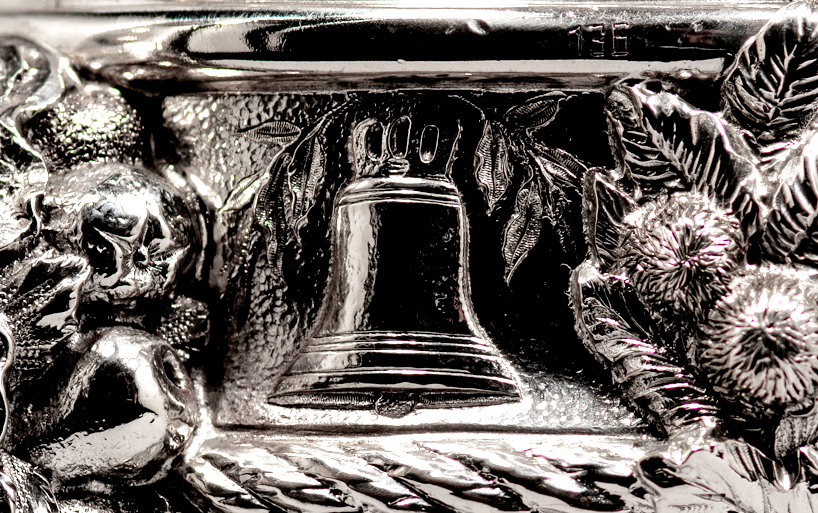
3. First Telegraph (number 137)
The original transmitting and receiving sets are now at the Smithsonian Institute and are also depicted on the pieces from Baltimore City and Baltimore, St. Mary’s, Charles, Somerset, and Wicomico counties.
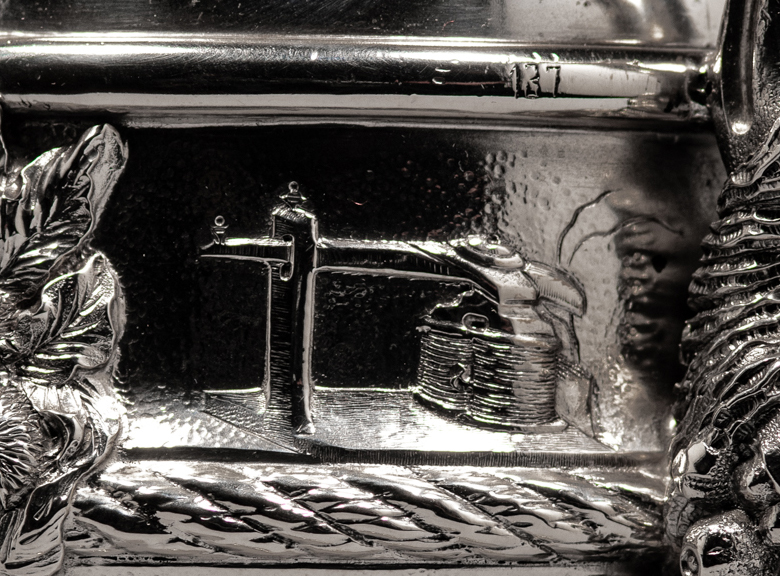
Preston-on-the-Patuxent was listed on the National Register of Historic Places in 1974.
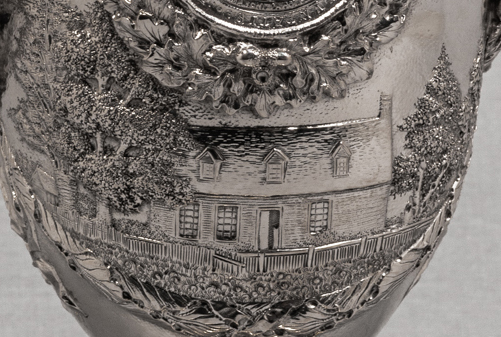
Scenes on the reverse (left to right, top to bottom):
1. Silk Cocoons and Mulberry Leaves (number 135)
Despite early initiatives to make silk production profitable, Maryland lagged behind other colonies in developing the industry. The first silk factory in Maryland was not opened until 1829, after the development of a white mulberry tree that could produce two leaf growths a year, providing enough food for the silk worms.
Mulberry sprays and silk cocoons are also portrayed on the Charles County cream pitcher.
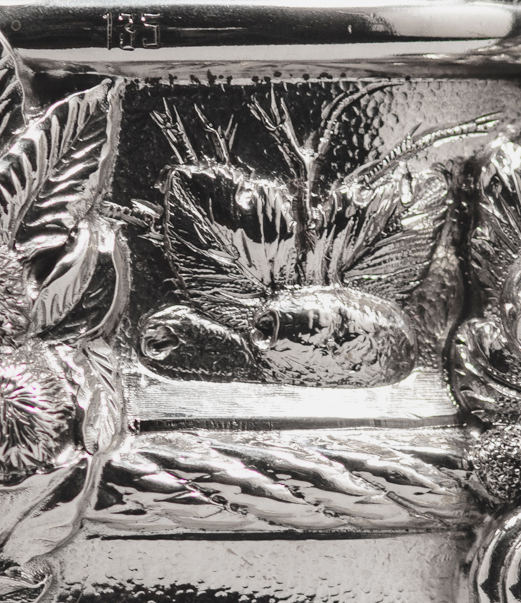
2. USS Maryland Cruiser
3. Middleham Chapel (number 134)
There is strong evidence that the present chapel was constructed with enslaved labor and that there are also enslaved individuals buried in the cemetery.
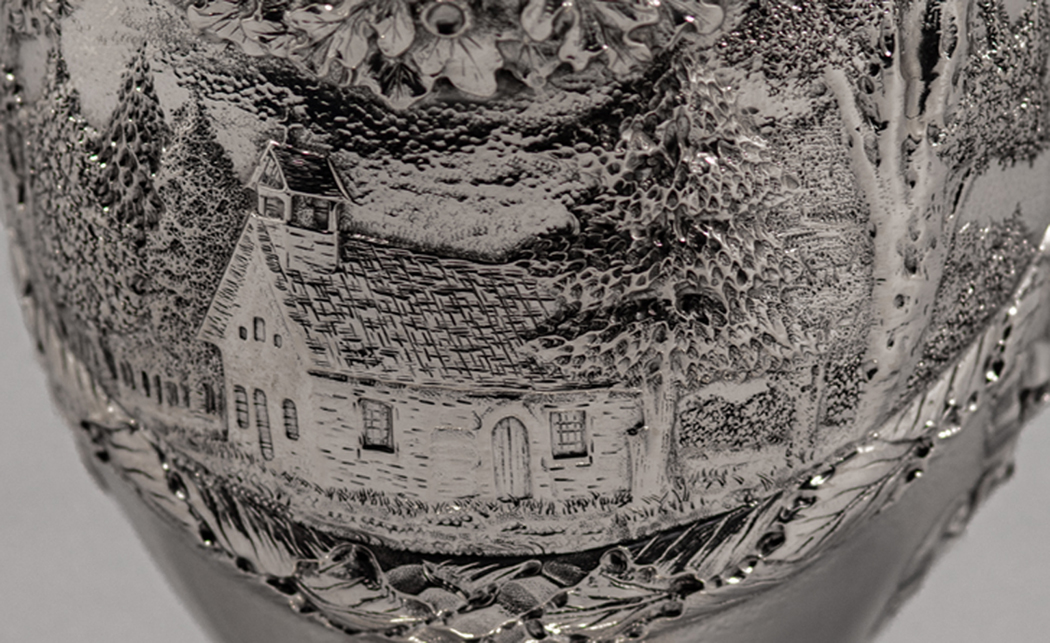
|
This web site is presented for reference purposes under the doctrine of fair use. When this material is used, in whole or in part, proper citation and credit must be attributed to the Maryland State Archives. PLEASE NOTE: The site may contain material from other sources which may be under copyright. Rights assessment, and full originating source citation, is the responsibility of the user. |
© Copyright August 07, 2024 Maryland State Archives
